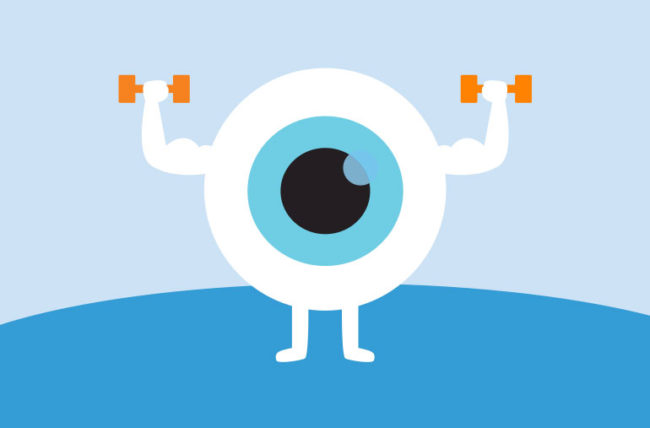20 useful tips for eye protection
With the weather fluctuations, prolonged working hours, excessive screen usage and unavailability to enjoying outdoor activities have shifted our natural eyecare into more organized feasible eyecare tips to protect these precious organs. Let’s explore 20 useful tips for eye protection.

Wearing sunglasses
One of the primary benefits of wearing sunglasses is their ability to block harmful ultraviolet (UV) rays from the sun. Prolonged exposure to UV rays can lead to cataracts, macular degeneration, and other eye conditions. Sunglasses with polarized lenses help reduce glare from reflective surfaces such as water, snow, and roads. This not only enhances visual comfort but also improves visibility and depth perception, especially in bright conditions
Using safety eyewear
In industries such as construction, manufacturing, and woodworking, flying debris is a common hazard. Without proper eye protection, these debris can cause serious injuries, including corneal abrasions, lacerations, and even blindness. Safety eyewear with impact-resistant lenses can help prevent these injuries. Prioritize your eye safety and use safety eyewear whenever necessary.

Working under proper lighting
Insufficient lighting can lead to eye strain, which can cause discomfort, headaches, and difficulty focusing. By ensuring adequate lighting in the workspace, one can reduce eye strain and improve your visual comfort.
Taking screen breaks
Staring at a screen for extended periods can lead to eye strain, also known as digital eye strain or computer vision syndrome. Symptoms include dry eyes, headaches, and blurred vision. Taking regular breaks can help reduce these symptoms and prevent long-term damage to eyes.
Adjusting screen and posture
Adjusting the position of screen helps in reducing eye strain and discomfort. Position your screen at eye level, about an arm’s length away from your face. This helps prevent the need to tilt head up or down, reducing strain on neck and eyes.
Taking screen breaks encourages to get up, stretch, and move around, which can improve your posture and reduce the risk of developing musculoskeletal problems associated with prolonged sitting.
Staying hydrated
Staying hydrated helps in maintaining the moisture balance in your eyes. This is important because tears not only lubricate your eyes but also help protect them from dust, irritants, and foreign particles. Dehydration can lead to dry eyes, causing discomfort and potentially leading to more serious issues if left untreated.
Blinking more often
Blinking helps spread tears evenly across the surface of the eye, keeping them moist and preventing dryness. This lubrication is essential for maintaining clear vision and reducing the risk of eye infections and irritation. Staring at screens for long periods can lead to eye strain and discomfort. By blinking more often, you can improve your visual comfort and reduce the likelihood of experiencing eye fatigue.
Eyesafety kits for sports
Participating in sports and physical activities can be a fun way to stay active and healthy. However, these activities also pose a risk of eye injuries. Eye safety kits, which typically include goggles or protective eyewear, are designed to protect your eyes from impact injuries, flying objects, and other hazards commonly encountered during sports. Wearing these kits can significantly reduce the risk of serious eye injuries and ensure that you can continue to enjoy your favorite activities safely.
Eyewear to deal with chemicals
When working with chemicals, safety should always be a top priority. Chemicals can cause severe damage to the eyes upon contact, leading to irritation, burns, and even permanent vision loss. Eyewear, such as safety goggles or glasses with side shields, creates a barrier that shields your eyes from chemical splashes, reducing the risk of injury.
Consuming good diet
A balanced diet not only benefits your overall health but also plays a crucial role in maintaining good eye health. A diet rich in fruits, vegetables, and whole grains can help reduce the risk of developing eye diseases. Antioxidants found in these foods help protect the eyes from damage caused by free radicals, which can contribute to the development of eye diseases. The worst and best foods for retina have been discussed in detail as well.
Avoiding rubbing eyes
Rubbing your eyes can transfer bacteria, viruses, and other germs from your hands to your eyes, increasing the risk of eye infections. The cornea is the clear, dome-shaped surface that covers the front of the eye. Rubbing your eyes vigorously can cause damage to the cornea, leading to corneal abrasions or scratches. Rubbing can worsen symptoms of allergies, such as itching and redness. Remember the importance of gentle care and find alternative ways to relieve any discomfort.
Following contact lens guideline
Failure to follow contact lens guidelines can increase the risk of eye infections, such as keratitis. Poor contact lens hygiene, such as sleeping in lenses or using expired solutions, can increase the risk of developing corneal ulcers. Failure to clean and replace contact lenses as recommended can lead to the buildup of deposits on the lenses. These deposits can cause irritation and discomfort, as well as increase the risk of infection.
Maintaining healthy weight
Being overweight or obese increases the risk of developing certain eye diseases, such as diabetic retinopathy, glaucoma, and age-related macular degeneration. These conditions can lead to vision loss if not detected and treated early. Maintaining a healthy weight can help improve your blood sugar and cholesterol levels, which are important for overall health, including eye health.
Regular eye exams
Regular eye exams can help detect eye conditions and diseases early, when they’re most treatable. Conditions such as glaucoma, macular degeneration, and diabetic retinopathy often have no early symptoms, so regular exams are key to catching them before they cause serious vision loss.
Artificial tear usage
The most obvious benefit of artificial tears is their ability to provide comfort from dryness and discomfort. Whether you’re experiencing dry eyes due to environmental factors, such as dry air or wind, or as a side effect of medications or prolonged screen time, artificial tears can help soothe your eyes and restore moisture.
Avoid smoking
Smoking has been linked to an increased risk of optic nerve damage, which can lead to vision loss and blindness. It can exacerbate dry eye syndrome, a condition characterized by insufficient tear production or poor tear quality. Smoking is a significant risk factor for AMD, as it can damage the macula, the part of the retina responsible for central vision. Quitting smoking is one of the best things you can do for your eye health and overall well-being.
Avoiding unnecessary screen time
Avoiding unnecessary screen time is crucial for maintaining good eye health and preventing digital eye strain and other associated problems. By setting limits, taking breaks, and protecting your eyes from blue light, you can reduce your risk of developing eye-related issues and enjoy healthier vision. So, remember to give your eyes a break and limit your screen time for the sake of your eye health.
Eye massage
Eye massage can help improve circulation around the eyes, which can reduce puffiness and dark circles. By gently massaging the area around your eyes, you can promote better blood flow and lymphatic drainage, leading to a refreshed and rejuvenated appearance.
Air quality
Environmental factors, such as smoke and smog, can also impact eye health. These factors can irritate the eyes and contribute to conditions such as dry eye syndrome. Good air quality can help reduce exposure to these environmental factors and protect your eyes from harm.
From regular eye exams to proper screen time habits, these tips cover a wide range of practices that can help keep your eyes healthy and happy.
Founder of EyesMatterMost- an optometry student who loves talking about eyes. I tend to cover topics related to optometry, ophthalmology, eye health, eyecare, eye cosmetics and everything in between. This website is a medium to educate my readers everything related to eyes.

